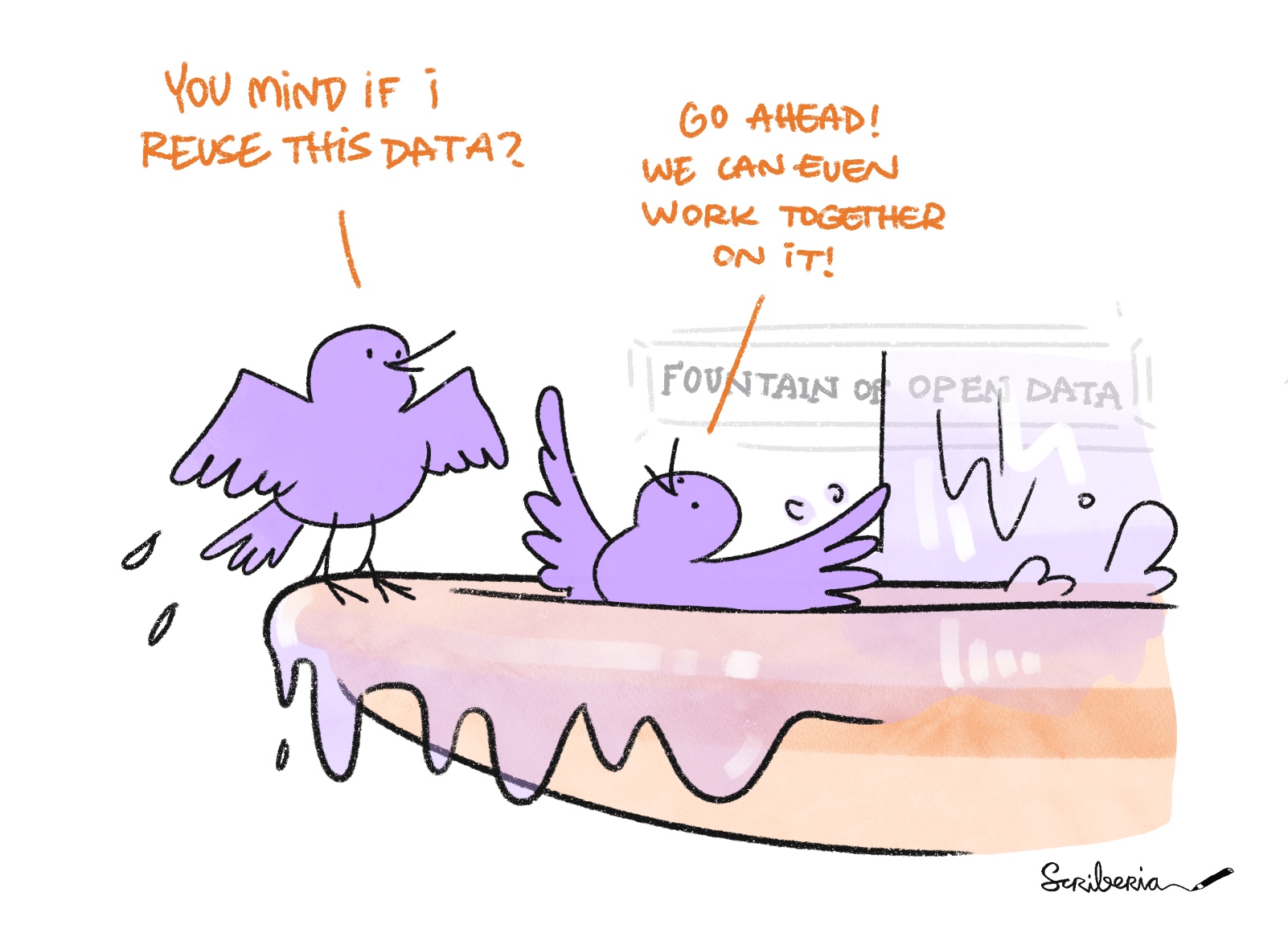Sharing and Archiving Data#
Motivations For Sharing Data#
There are many reasons to share your research data publicly.
To allow the possibility to fully reproduce a scientific study.
To prevent duplicate efforts and speed up scientific progress. Large amounts of research funds and careers of researchers can be wasted by only sharing a small part of research in the form of publications.
To facilitate collaboration and increase the impact and quality of scientific research.
To make results of research openly available as a public good, since research is often publicly funded.
You can read more about why data should be available, and why some data should remain closed, in the Open Data section.

Fig. 54 Birds of Open Data. The Turing Way project illustration by Scriberia. Used under a CC-BY 4.0 licence. DOI: 10.5281/zenodo.3332807.#
Additional resources on data sharing#
‘How can you make research data accessible?’: a blog that contains five steps to make your data more accessible
The European Commission’s data guidelines
Videos on Data sharing and reuse & Data Preservation and Archiving from the TU Delft Open Science MOOC.
Coursera Videos from Research Data Management and Sharing on the Benefits of Sharing, Why Archive Data?, and Why is Archiving Data Important?
Blog: Ask not what you can do for open data; ask what open data can do for you
[LA18]
Data Availability Statement#
Once you made your data available, it is important to ensure that people can find it when they read the associated article. You should cite your dataset directly in the paper in places where it is relevant, and include a citation in your reference list, as well as include a Data Availability Statement at the end of the paper (similar to the acknowledgement section). See Citing Data for some examples.
